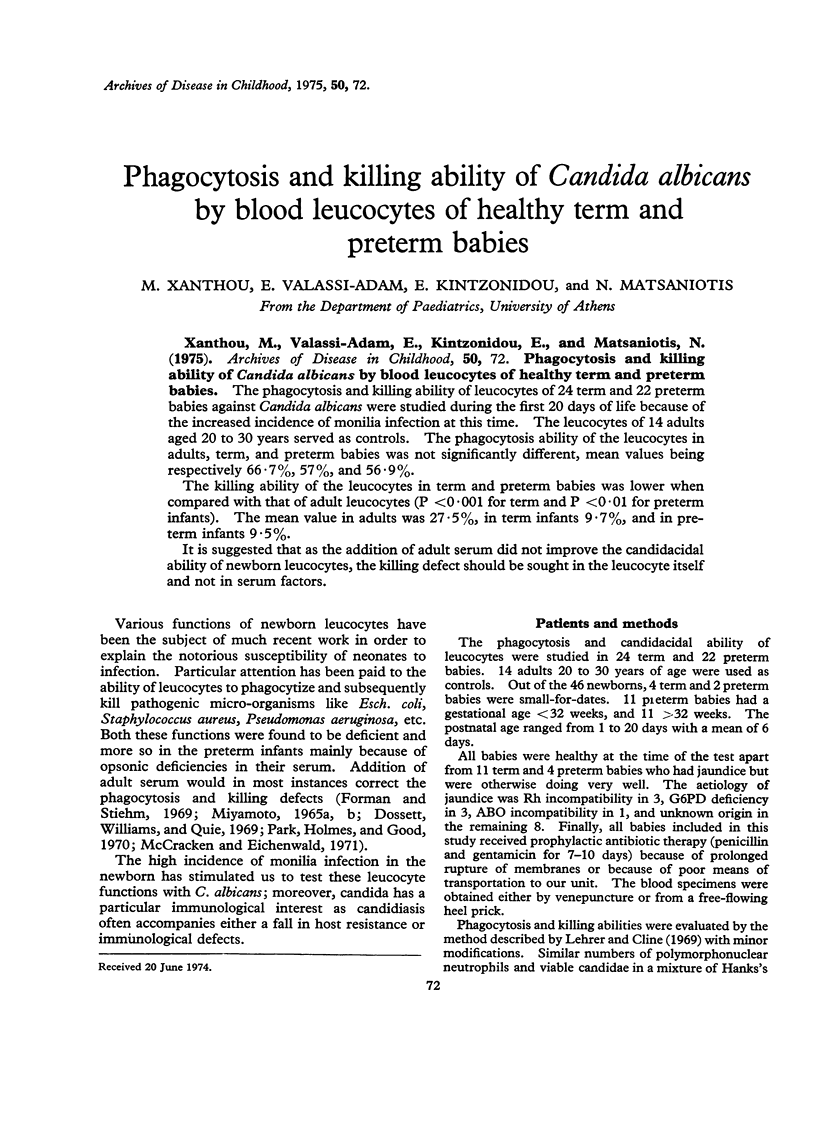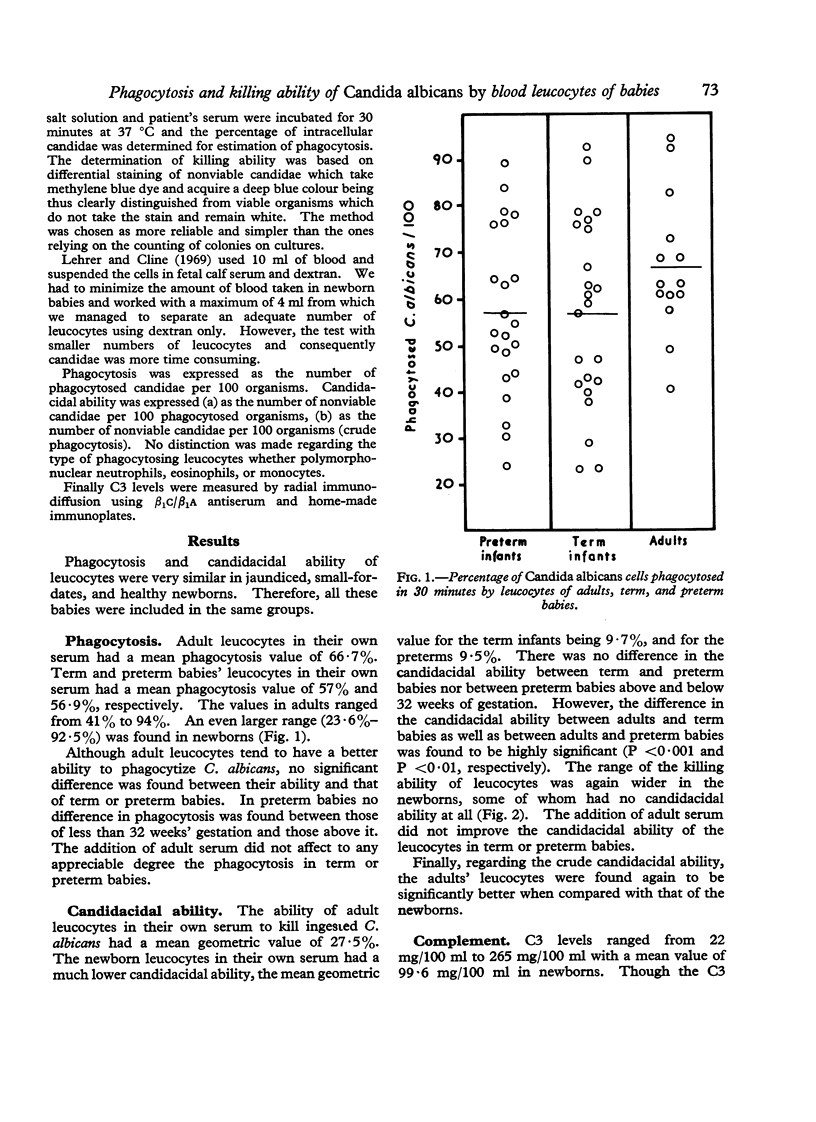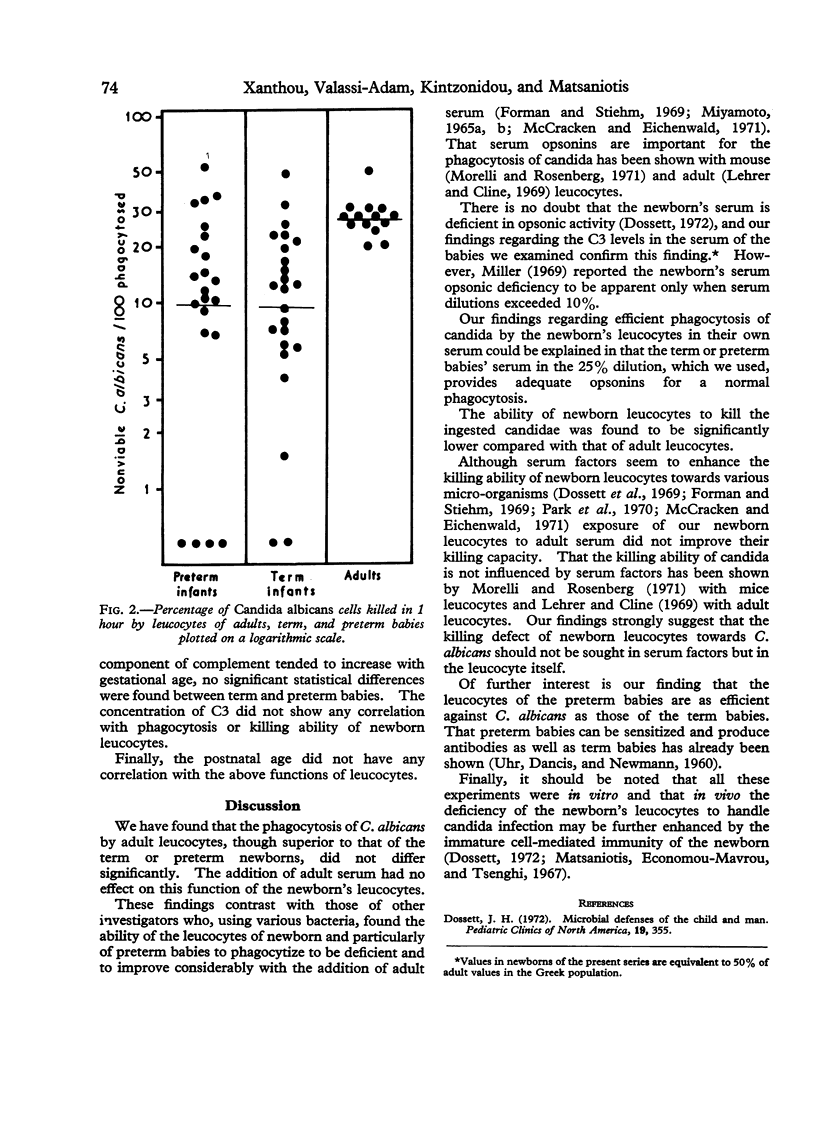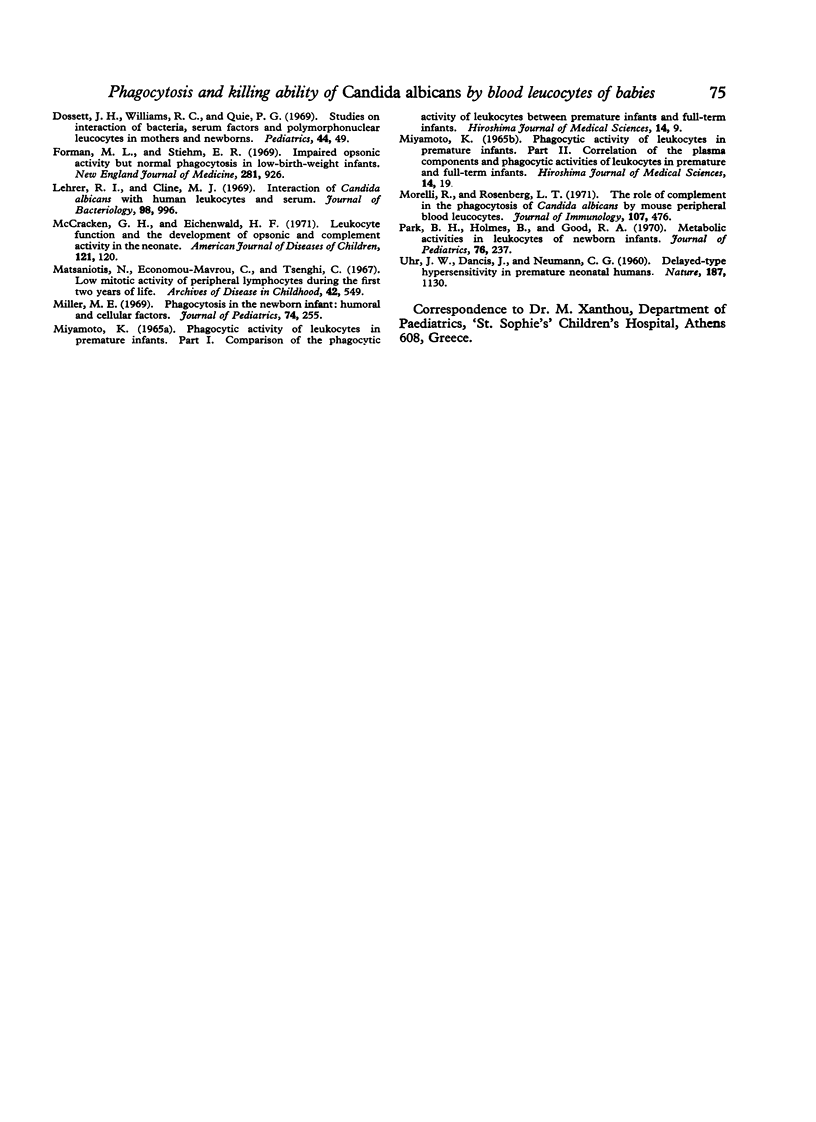Abstract
The phagocytosis and killing ability of leucocytes of 24 term and 22 preterm babies against Candida albicans were studies during the first 20 days of life because of the increased incidence of monilia infection at this time. The leucocytes of 14 adults aged 20 to 30 years served as controls. The phagocytosis ability of the leucocytes in adults, term, and preterm babies was not significantly different, mean values being respectively 66-7%, 57%, and 56-9%. The killing ability of the leycocytes in term and preterm babies was lower when compared with that of adult leucocytes (P less than 0-001 for term and P less than 0-01 for preterm infants). The mean value in adults was 27-5%, in term infants 9-7%, and in preterm infants 9-5%. It is suggested that as the addition of adult serum did not improve the candidacidal ability of newborn leucocytes, the killing defect should be sought in the leucocyte itself and not in serum factors.
Full text
PDF



Selected References
These references are in PubMed. This may not be the complete list of references from this article.
- Dossett J. H. Microbial defenses of the child and man. Pediatr Clin North Am. 1972 May;19(2):355–372. doi: 10.1016/s0031-3955(16)32705-5. [DOI] [PubMed] [Google Scholar]
- Dossett J. H., Williams R. C., Jr, Quie P. G. Studies on interaction of bacteria, serum factors and polymorphonuclear leukocytes in mothers and newborns. Pediatrics. 1969 Jul;44(1):49–57. [PubMed] [Google Scholar]
- Forman M. L., Stiehm E. R. Impaired opsonic activity but normal phagocytosis in low-birth-weight infants. N Engl J Med. 1969 Oct 23;281(17):926–931. doi: 10.1056/NEJM196910232811704. [DOI] [PubMed] [Google Scholar]
- Lehrer R. I., Cline M. J. Interaction of Candida albicans with human leukocytes and serum. J Bacteriol. 1969 Jun;98(3):996–1004. doi: 10.1128/jb.98.3.996-1004.1969. [DOI] [PMC free article] [PubMed] [Google Scholar]
- Matsaniotis N., Economou-Mavrou C., Tsenghi C. Low mitotic activity of peripheral lymphocytes during the first two years of life. Arch Dis Child. 1967 Oct;42(225):549–551. doi: 10.1136/adc.42.225.549. [DOI] [PMC free article] [PubMed] [Google Scholar]
- McCracken G. H., Jr, Eichenwald H. F. Leukocyte function and the development of opsonic and complement activity in the neonate. Am J Dis Child. 1971 Feb;121(2):120–126. doi: 10.1001/archpedi.1971.02100130074008. [DOI] [PubMed] [Google Scholar]
- Miller M. E. Phagocytosis in the newborn infant: humoral and cellular factors. J Pediatr. 1969 Feb;74(2):255–259. doi: 10.1016/s0022-3476(69)80073-9. [DOI] [PubMed] [Google Scholar]
- Miyamoto K. Phagocytic activity of leucocytes in premature infants. I. Comparison of the phagocytic activity of leucocytes between premature infants and full-term infants. Hiroshima J Med Sci. 1965 Mar;14(1):9–17. [PubMed] [Google Scholar]
- Miyamoto K. Phagocytic activity of leucocytes in premature infants. II. Correlation of the plasma components and phagocytic activities of leucocyte in premature and full-term infants. Hiroshima J Med Sci. 1965 Mar;14(1):19–30. [PubMed] [Google Scholar]
- Morelli R., Rosenberg L. T. The role of complement in the phagocytosis of Candida albicans by mouse peripheral blood leukocytes. J Immunol. 1971 Aug;107(2):476–480. [PubMed] [Google Scholar]
- Park B. H., Holmes B., Good R. A. Metabolic activities in leukocytes of newborn infants. J Pediatr. 1970 Feb;76(2):237–241. doi: 10.1016/s0022-3476(70)80168-8. [DOI] [PubMed] [Google Scholar]
- UHR J. W., DANCIS J., NEUMANN C. G. Delayed-type hypersensitivity in premature neonatal humans. Nature. 1960 Sep 24;187:1130–1131. doi: 10.1038/1871130a0. [DOI] [PubMed] [Google Scholar]


